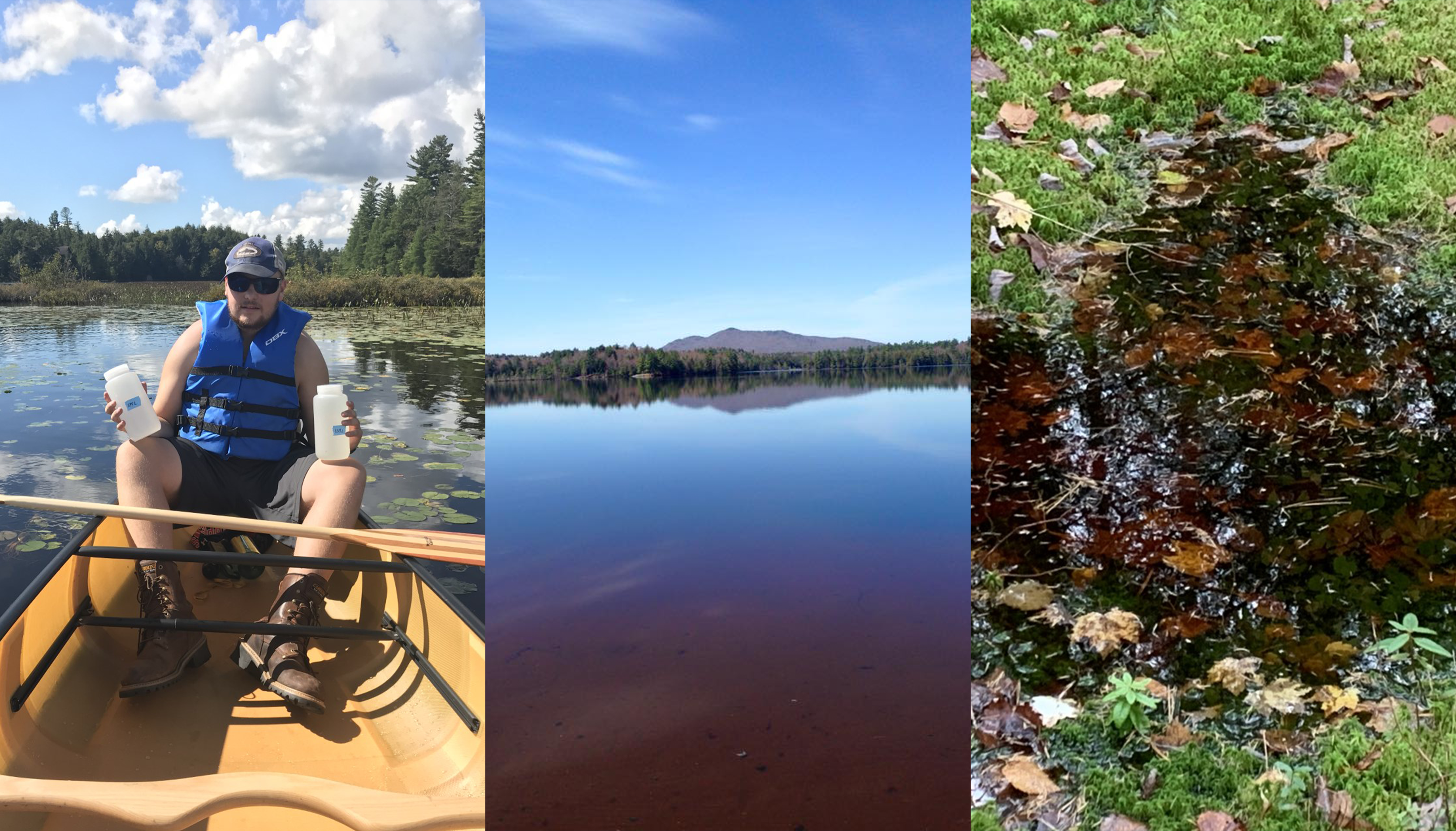By Dana Yamashita
Lake “browning” occurs as dissolved organic matter enters a lake and affects the light absorption and plant growth within the lake. A phenomena happening across the northeastern United States, new research indicates that browning lakes may be growing less productive and less able to sustain life.
“A key question regarding lake browning is what impact it will have on aquatic food webs, including algal growth and fisheries,” said Kevin Rose, co-author and assistant professor of biological sciences at Rensselaer Polytechnic Institute. “These findings demonstrate that browning lakes are becoming increasingly light-limited. As a result, algae and aquatic plants growing in these lakes will increasingly be constrained to shallower zones, restricting an important food resource for the invertebrates that feed fish. This shift could make it challenging for fish that typically rely on visual foraging, like brook trout, to find prey.”
Recovery from acid rain, changes in land use, and climate change all affect the amount of dissolved organic matter that reaches a lake and it was previously thought this was a good thing — that levels of nutrients like nitrogen and phosphorous would also increase. But according to Jonathan Stetler, the lead author and a graduate student working with Rose, nutrients aren’t increasing as lakes darken over time. And without the increase in nutrients, models created by the authors predict that darker lakes will be less hospitable to plant and animal life.
“Lakes are browning, and across the region there is a correlation that shows that browner lakes have more nutrients. But when we look across time, we see that lakes that are browning have similar levels of nutrients as they did before undergoing browning,” Stetler said. “That tells us that the processes that control nutrients across space and time differ from one another.”
The research team collected data on carbon, nutrient levels in the water, and light penetration of lakes across the country and compared that with a long-term dataset with similar information collected on lakes in the Adirondack Mountains from 1994 to 2012. They found that nitrogen and phosphorous levels were not increasing along with an increase in dissolved organic matter.
“Since nutrient limitation can reduce lake productivity, this observation has important implications for the future structure and function of these aquatic ecosystems,” said Charles Driscoll, a co-author and professor at Syracuse University. Stetler said the findings, which revealed a discrepancy between data collected in a spatial survey and long-term records, highlights the need for continuous long-term monitoring. He noted that often the true value of long-term datasets isn’t fully realized until decades later.
“Lake browning generates a spatiotemporal mismatch between dissolved organic carbon and limiting nutrients” was published with support from the U.S. National Science Foundation. The New York State Energy Research Development Authority (NYSERDA) supported the project that collected the long-term Adirondack lake data. Stetler, Rose, and Driscoll were joined in the research by Lesley Knoll at Itasca Biological Station and Laboratories.
Images courtesy of Jonathan Stetler.




